How smart energy helps autism homes
Revolutionizing Autism Homes with Smart Energy Solutions
Understanding the Impact of Smart Energy on Autism Homes
In today's world, the integration of smart energy solutions within homes tailored for individuals with autism is not just advantageous but transformative. These innovations support the needs of autistic individuals by creating environments that are not only energy-efficient but also sensitive to sensory requirements. Through smart technologies and renewable energy systems, autism-friendly homes are becoming more comfortable, cost-effective, and supportive of higher quality of life. This narrative explores the various components and benefits that smart energy brings to these special households.
Enhancing Living Conditions through Smart Energy
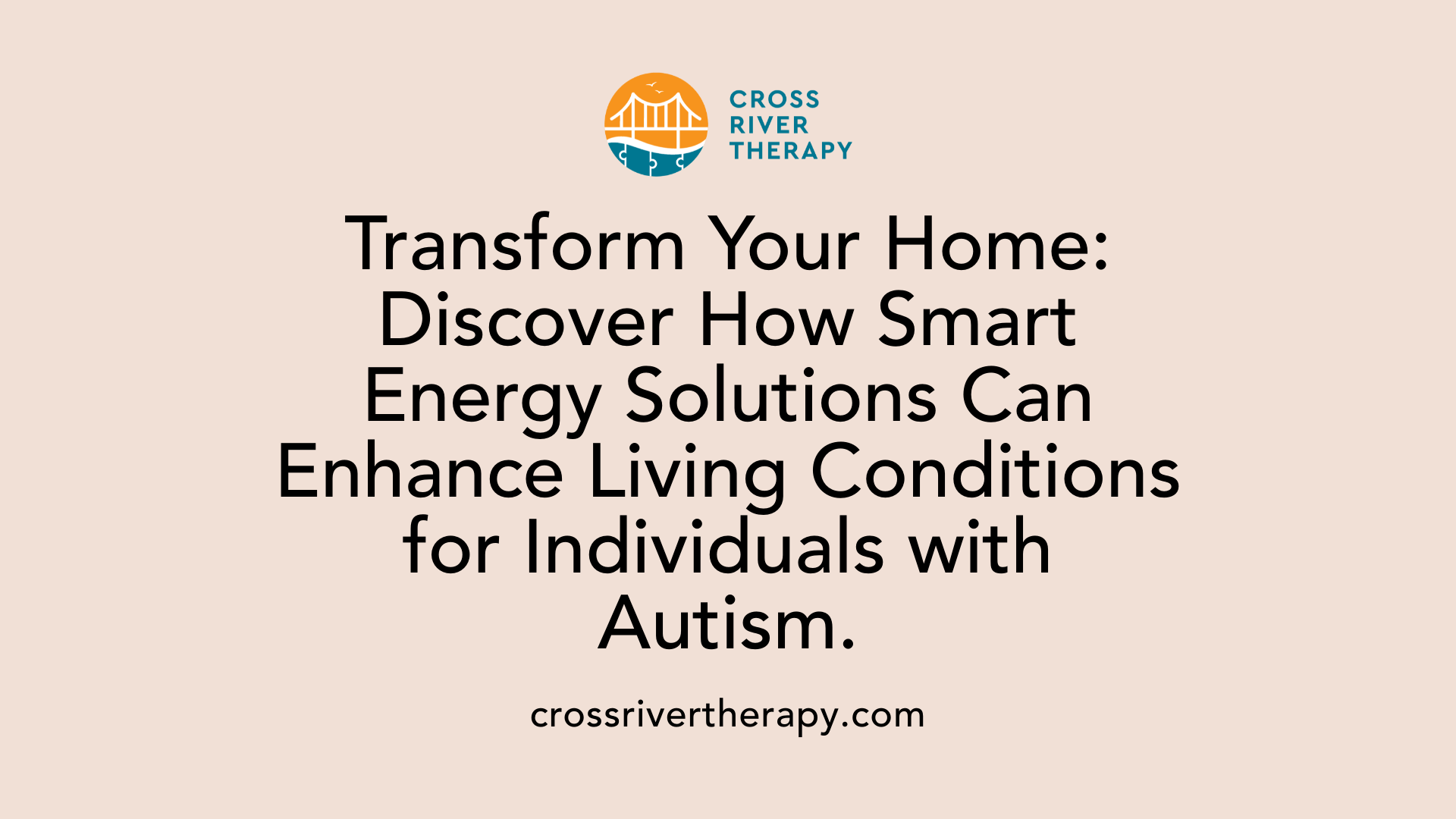
How can smart energy solutions improve living conditions for individuals with autism?
Smart energy solutions can significantly enhance living conditions for individuals with autism by creating adaptable and comfortable home environments. Utilizing advanced technologies such as smart thermostats and lighting systems allows families to tailor their homes according to specific sensory needs. For instance, smart thermostats offer precise temperature control, which is vital for individuals sensitive to heat fluctuations, while elegant smart lighting systems can adjust brightness and color to reduce glare and create soothing atmospheres.
Beyond comfort, these automated systems often feature remote management capabilities, enabling families to schedule adjustments based on daily routines. This predictability can greatly alleviate anxiety and establish a stable environment for those with autism. Additionally, energy-efficient appliances help lower utility costs, providing financial relief that can be redirected towards essential therapies or services.
The integration of smart technologies not only improves safety through real-time monitoring but also enhances independence by enabling individuals to control their environments with ease. With features like voice activation and customizable settings, individuals can express their preferences, fostering a sense of autonomy and promoting overall well-being. Overall, smart energy solutions create harmonious living spaces that contribute positively to the quality of life for families affected by autism.
Energy Efficiency and Its Benefits in Autism-Friendly Environments
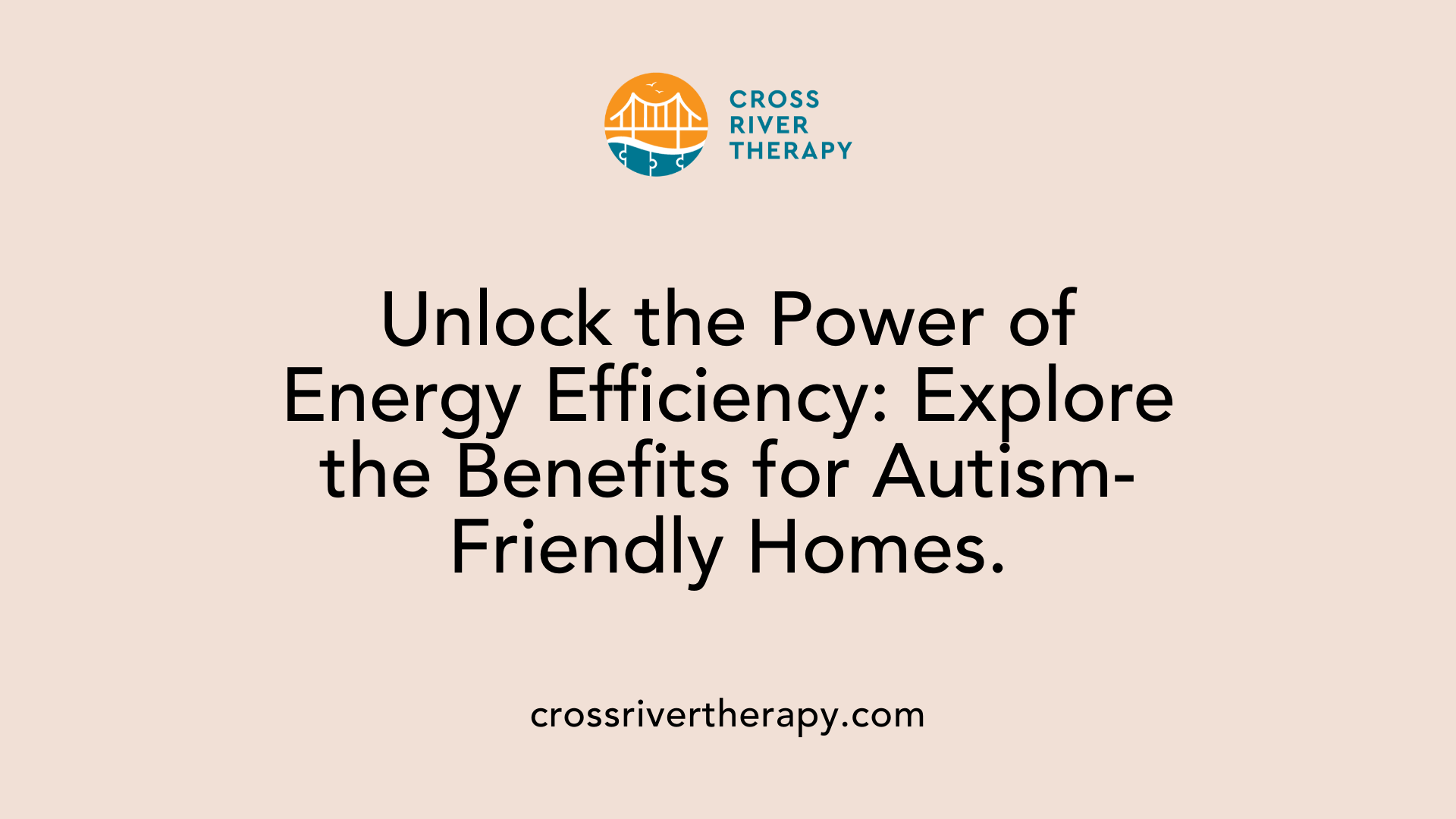
What are the benefits of energy-efficient practices tailored for autism-friendly environments?
Energy-efficient practices designed for autism-friendly environments yield extensive benefits that cater to the unique needs of families and individuals with autism. One primary advantage is the reduction in energy costs. For instance, families adopting renewable energy sources like solar power can save up to 90% on their utility bills, enabling them to allocate funds more effectively towards therapies and support services crucial for their loved ones.
Moreover, the integration of smart technologies, such as smart thermostats and LED lighting, significantly enhances comfort. These systems allow for precise temperature control and customizable lighting, which create stable and calming atmospheres. Stable indoor climates are pivotal for individuals with autism, who may be sensitive to fluctuations in temperature or lighting.
Incorporating soundproofing measures and optimizing natural light also contribute to creating serene environments. Reduced noise and glare help diminish sensory overload, leading to improved emotional regulation and tranquility for those on the spectrum. The benefits extend to improved indoor air quality through better ventilation and low-emission appliances, positively affecting respiratory health and cognitive function.
Overall, these adaptations maximize comfort while reducing stress, fostering a conducive environment for individuals with autism to thrive. With enhanced living conditions, families are not only improving day-to-day life but also prioritizing essential services that support the well-being of individuals with autism.
Renewable Energy Systems in Autism Homes
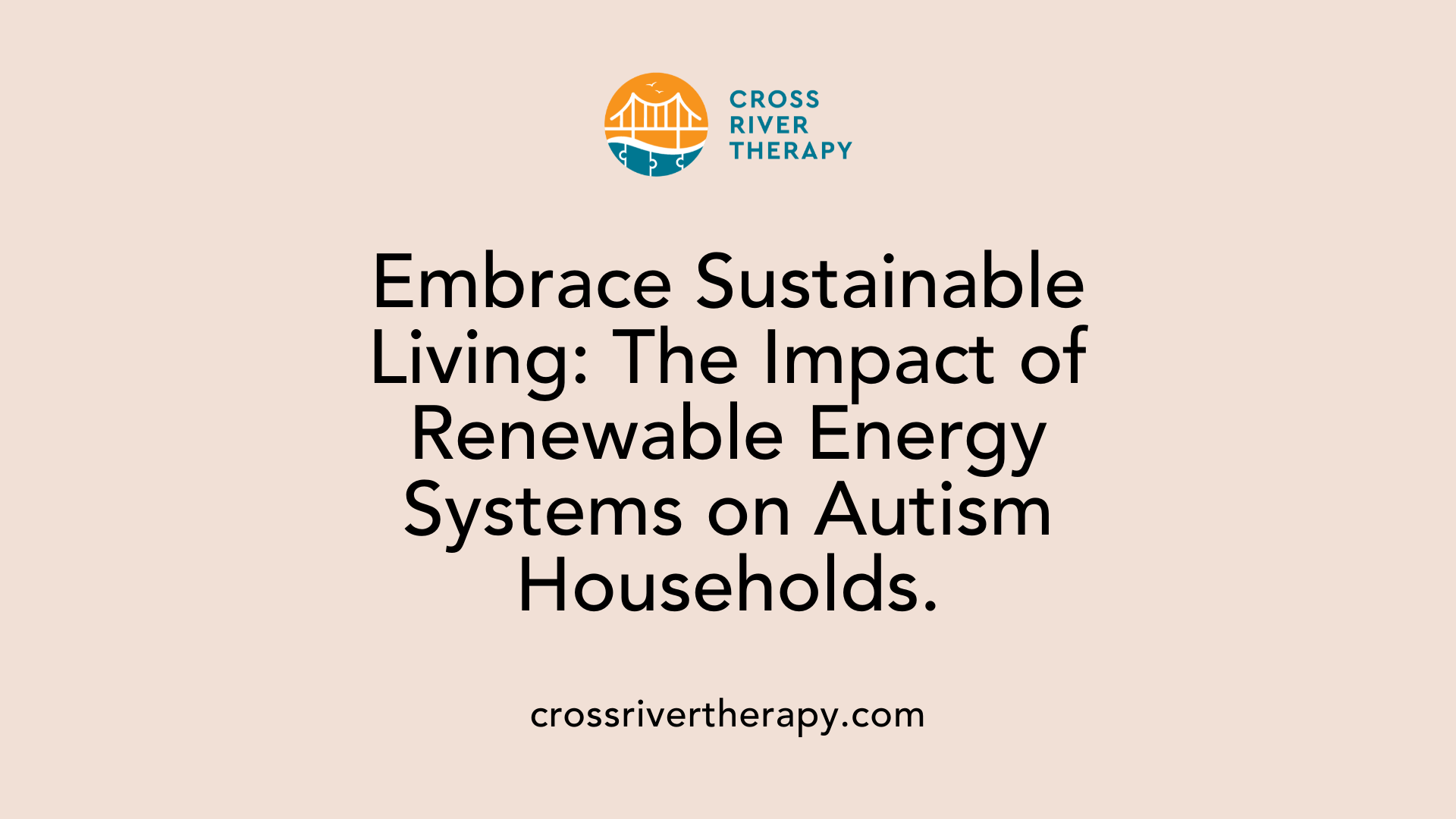
Can renewable energy systems create supportive living environments and reduce costs for autism households?
Yes, renewable energy systems can significantly create supportive living environments and reduce costs for autism households. By providing stable and sustainable power, these systems help maintain a consistent atmosphere, which is essential for the emotional well-being of individuals on the autism spectrum. Families can experience substantial financial savings on utility bills—averaging around 20-50%—which is critical given the high annual costs associated with autism care.
Additionally, the quieter operation of renewable energy sources minimizes sensory overload, contributing to a calmer living space. This quietness can be particularly beneficial for individuals sensitive to noise, reducing the likelihood of sensory disturbances.
Moreover, integrating smart technologies with renewable energy allows for personalized comfort adjustments. For instance, families can customize lighting and temperature levels to suit individual sensory needs, enhancing the overall quality of life for autistic individuals and their families. Smart home features like automated lighting and temperature controls can help create predictable environments essential for those with autism.
In summary, combining renewable energy systems with smart home technology not only supports financial savings but also enriches the living conditions, making homes more accommodating for families affected by autism.
Impact of Smart Home Technology on Safety and Emotional Well-being
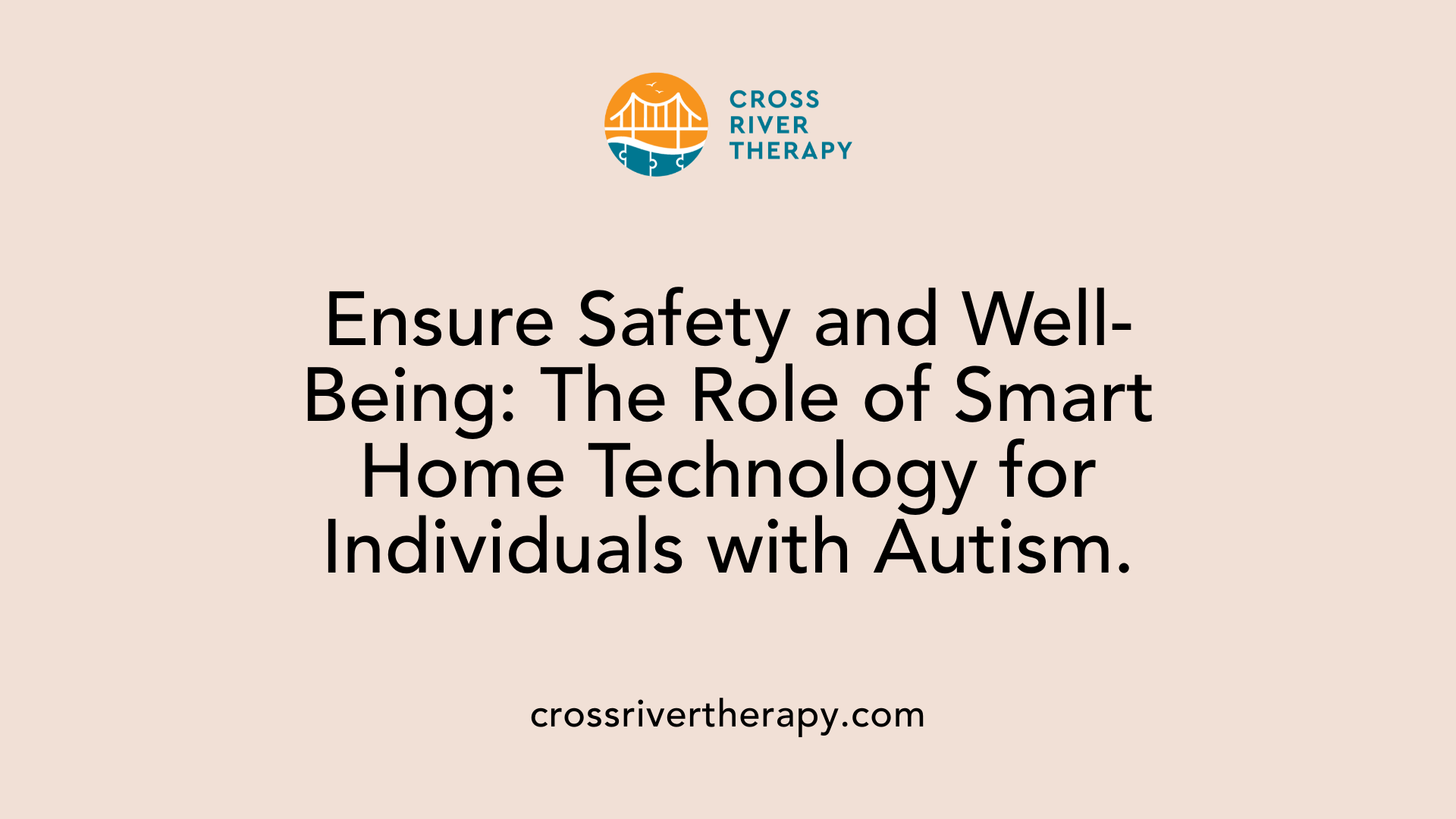
What is the impact of smart home technology on safety and emotional well-being for autistic individuals?
Smart home technology plays a crucial role in enhancing the safety and emotional well-being of individuals with autism. It provides customizable environments that are especially important for addressing sensory sensitivities. With features like motion sensors and automated alerts, these systems improve security by preventing wandering, ensuring a safer living space for residents.
Additionally, smart devices enable precise control over lighting and sound levels. For instance, automated lighting systems can adjust brightness and color temperature based on individual preferences, reducing sensory overload and creating a calming atmosphere. Sound-proofing materials further contribute to this effort, helping to minimize distracting noises that could lead to anxiety.
Beyond safety, smart home technology facilitates independence. Voice-activated devices allow individuals with autism to manage their home environment effortlessly. This control can significantly lessen the stress often associated with relying on caregivers, enabling greater autonomy in daily routines. Furthermore, advancements in AI and robotics provide tools to enhance communication, boosting social engagement and emotional stability for autistic individuals.
Summary of Benefits of Smart Home Technology for Autistic Individuals
In conclusion, smart home technologies are essential in providing a supportive living environment for those with autism, effectively addressing specific sensory and safety needs.
Addressing Sensory Needs through Energy Efficiency
How can energy efficiency address sensory needs and improve quality of life for individuals with autism?
Energy efficiency plays a crucial role in catering to the sensory needs of individuals with autism by generating environments that prioritize comfort and minimize sensory overload.
Key Features of Energy-Efficient Homes for Autism
- Lighting: Using energy-efficient lighting, such as dimmable LEDs, can help regulate brightness, reduce glare, and create a calming atmosphere that enhances mood and concentration.
- Temperature Control: Smart thermostats and efficient HVAC systems maintain stable and optimal temperature ranges. This consistency is vital for individuals with autism, as fluctuations can cause discomfort and anxiety.
- Air Quality: Energy-efficient practices often lead to improved indoor air quality through effective ventilation and air filtration systems, which is especially important for those sensitive to allergens and pollutants.
- Noise Reduction: Quieter energy sources and sound-absorbing materials in energy-efficient homes help decrease noise levels, creating a serene environment.
By leveraging these energy-saving strategies, families can construct nurturing living spaces that significantly enhance the quality of life for individuals on the autism spectrum. The combination of tailored sensory features contributes to emotional well-being and daily comfort.
Integrating Smart Energy Solutions in Autism Homes
What are strategies and technologies to integrate smart energy solutions in homes for individuals with autism?
Integrating smart energy solutions in homes designed for individuals with autism involves a thoughtful approach that focuses on comfort and environmental control. Here are several strategies:
- Smart Lighting: Utilizing LED bulbs that provide adjustable brightness and color temperatures can create calming environments. These lights can be programmed to minimize glare and flickering, catering to sensory sensitivities.
- Programmable Thermostats: Smart thermostats can maintain stable indoor temperatures, reducing fluctuations that may cause discomfort. They adapt to occupancy patterns, ensuring energy efficiency while promoting a calm environment.
- Energy Monitoring Systems: Implementing systems that track energy consumption helps families manage usage and recognize patterns. This transparency allows for better control over energy waste, reducing anxiety about costs.
- Proper Insulation: High-quality insulation around windows and walls prevents drafts and helps maintain a consistent indoor climate, crucial for those with sensory sensitivities.
- Renewable Energy Sources: Incorporating solar panels or geothermal systems cuts utility costs significantly. Not only does it provide financial relief, but it also fosters a sustainable living environment which benefits cognitive functioning in individuals with autism.
- IoT Integration: Smart home technologies connected via the Internet of Things (IoT) provide real-time monitoring and automated control of environmental factors, enhancing independence for individuals with autism.
When these strategies are combined, they foster a supportive living space, improving the overall quality of life for families navigating autism-related challenges.
Practical Implementations in Supporting Autism Families
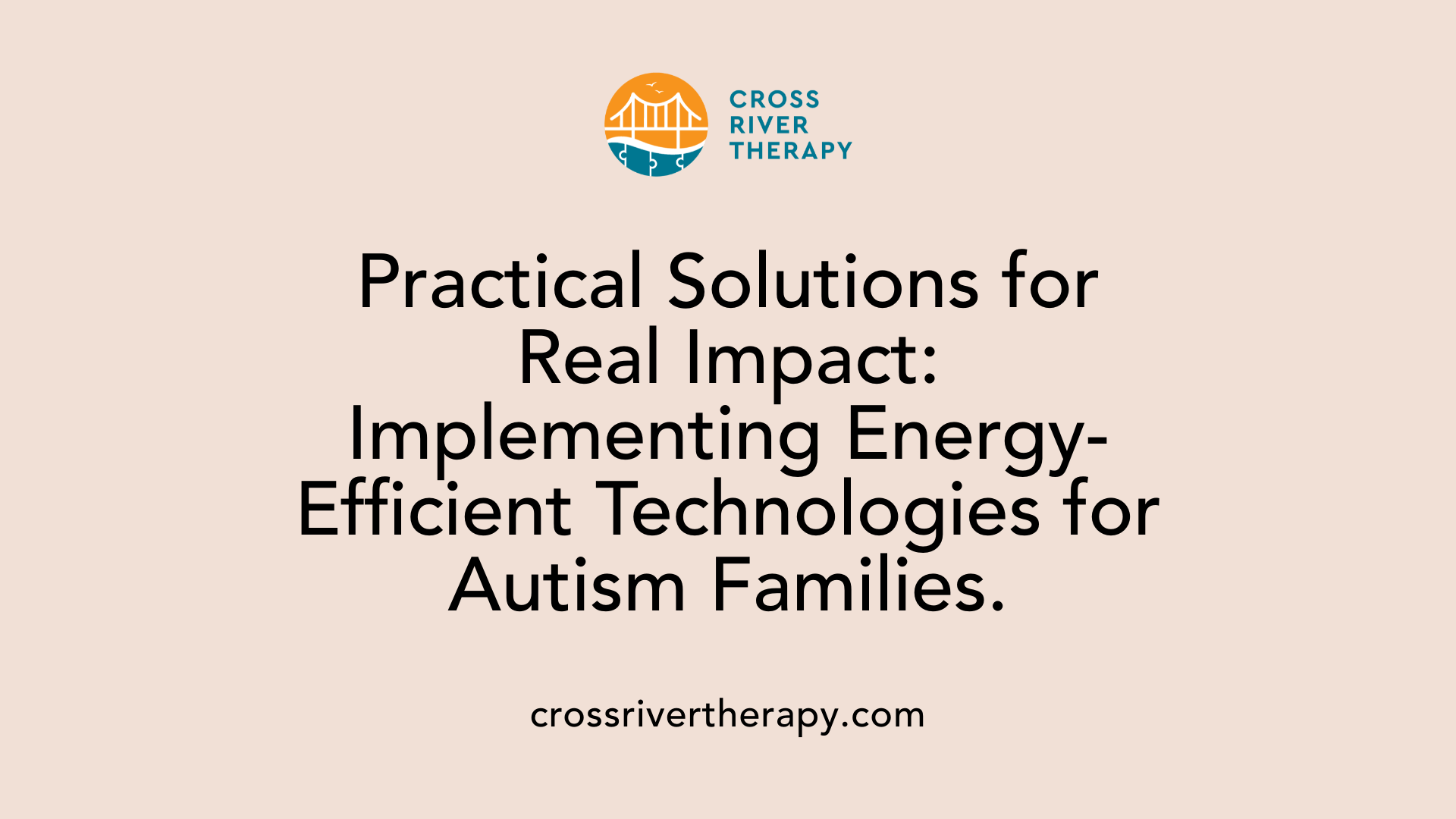
Are there practical implementations of energy-efficient technologies for creating supportive environments for autism families?
Yes, there are various effective implementations of energy-efficient technologies that cater specifically to the needs of families with autism. These solutions are designed to create calming and supportive environments while simultaneously addressing energy efficiency.
One of the core technologies used is smart LED lighting. These systems can adjust their brightness and color temperature to align with the time of day or specific activities, reducing visual stress and accommodating sensory preferences. For example, soft, warm lighting can promote relaxation, while brighter light can enhance focus during tasks.
Smart thermostats also play a crucial role by learning the household’s routines. They can automatically adjust temperatures, ensuring a stable indoor climate that minimizes discomfort from extremes in heat or cold—an important consideration for individuals with sensory sensitivities.
Additionally, Energy Star rated appliances help reduce both energy consumption and noise levels, easing any auditory sensitivities. Proper insulation and noise-reduction features further help maintain a quiet and nurturing environment, which is essential for comfort.
Together, these strategies not only alleviate the financial burden associated with high energy bills—potentially saving families up to 90% on utility costs—but they also enhance the overall living conditions, thus supporting the well-being of autism families.
Financial Benefits of Smart Energy in Autism Homes
Financial Savings
Energy-efficient homes bring significant financial relief to families supporting individuals with autism. By implementing smart energy solutions, families can reduce their utility bills substantially. For instance, households that transition to renewable energy sources like solar power can save up to 90% on their energy costs. This substantial reduction means families can redirect funds towards essential services such as therapies and medical care, which can average around $60,000 annually for autism care.
Using Energy Star-rated appliances and smart thermostats can further increase savings, with families often saving between $100 and $150 annually. These savings can accumulate over time, making a considerable difference in budgeting for autism-related expenses.
Smart Energy Solutions
The integration of smart energy technologies not only lowers costs but enhances the living environment for those with autism. Features like adjustable lighting and automated temperature control create a calming atmosphere, minimizing sensory overload. This smart technology allows for personalized management of energy use while significantly improving the comfort of residents.
Moreover, smart home advancements in energy efficiency enable families to track consumption patterns. Smart energy solutions can optimize resource use and boost financial savings, offering families the support they need to navigate the challenges associated with autism care.
Supporting Emotional and Sensory Comfort with Smart Energy
Emotional and Sensory Support
Individuals with autism often experience heightened sensory sensitivities, necessitating environments that promote emotional stability and comfort. Energy-efficient homes are designed to mitigate sensory discomfort through stable indoor climates and optimized lighting. Features like effective insulation help maintain consistent temperatures, reducing sensory disruptions that can lead to anxiety.
Additionally, the incorporation of soft, adjustable LED lighting minimizes harsh glare and flickering, creating a soothing ambiance. This allows families to customize lighting conditions according to the specific needs of their loved ones, promoting emotional well-being and focus. Quiet spaces within the home, combined with sound-absorbing materials, further enhance comfort by reducing noise levels that may overwhelm sensitive individuals.
Smart Energy
Smart energy technologies play a pivotal role in creating supportive living environments. Automation systems, such as smart thermostats and lighting, can be programmed to adjust according to daily routines, ensuring a predictable and calming atmosphere. Voice-activated devices empower individuals with autism to control their surroundings, fostering independence while mitigating anxiety.
Moreover, renewable energy sources contribute to a stable and quieter living space, reducing the sensory overload often associated with traditional energy systems. By harnessing smart energy solutions, families can create nurturing home environments tailored to the unique emotional and sensory needs of autistic individuals.
Creating Holistic and Inclusive Environments with Smart Energy
Holistic environments
Creating a nurturing space for individuals with autism involves integrating various environmental elements that promote comfort and well-being. One effective approach is the use of smart energy solutions. By focusing on energy-efficient designs, families can establish calming atmospheres that cater to sensory sensitivities, which are common among those on the spectrum.
Smart energy for autism
Smart technologies, including automated lighting and heating systems, allow for real-time adjustments based on individual needs. For instance, customizable lighting can be programmed to reduce glare and provide a stable, soothing ambiance. Likewise, smart thermostats help maintain consistent indoor temperatures, minimizing discomfort from heat or cold fluctuations.
Implementing energy-efficient appliances and renewable energy systems not only lowers utility costs—potentially freeing up to 90% of family budgets—but also enhances air quality and emotional regulation. Options like community solar initiatives foster connections among families while supporting sustainable practices.
Combining these personalized technologies with holistic design, such as sound-absorbing materials and quiet zones, significantly boosts the overall quality of life for individuals with autism.
The Transformative Power of Smart Energy in Autism Homes
The integration of smart energy solutions in homes designed for individuals with autism offers numerous benefits spanning comfort, cost savings, and improved quality of life. By customizing environments through smart technologies, these homes cater to the unique sensory needs of autistic residents. Furthermore, the savings achieved through energy efficiency and renewable resources allow families to redirect funds towards essential autism care and services. As technology continues to advance, the potential for even greater support and facilitation grows, promising ongoing improvements in the day-to-day experiences for individuals with autism and their families.



